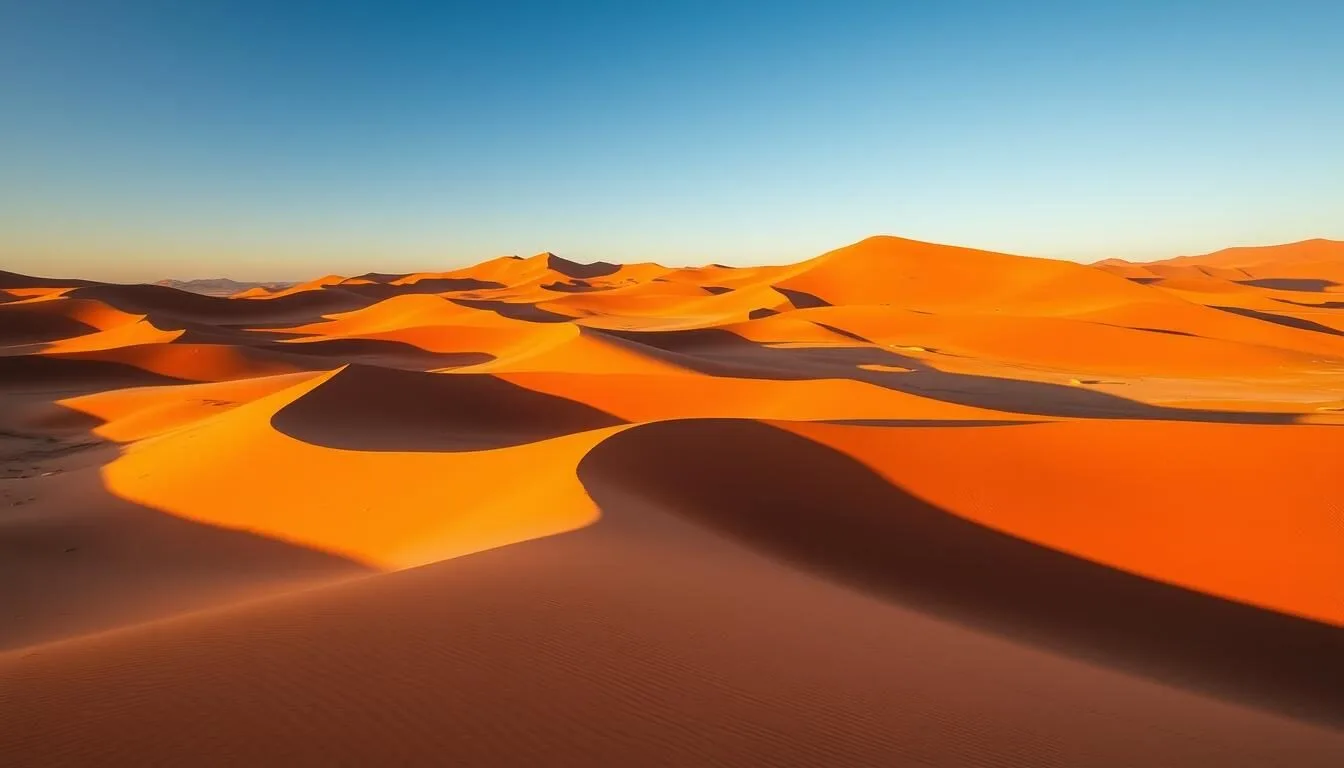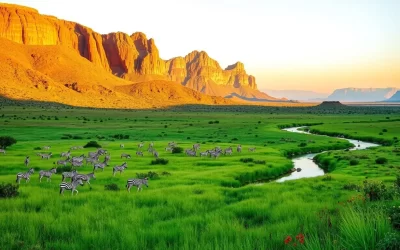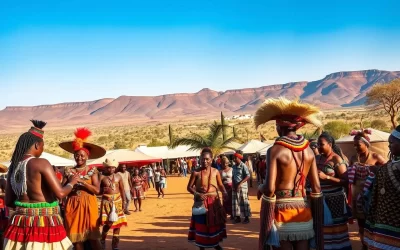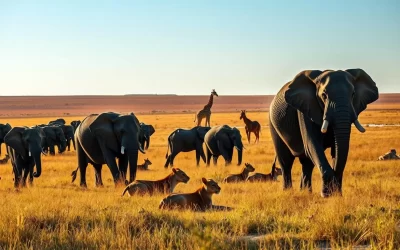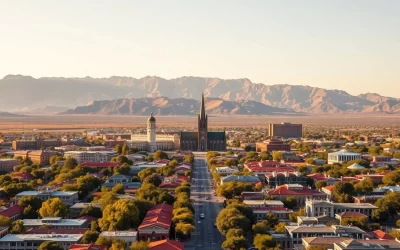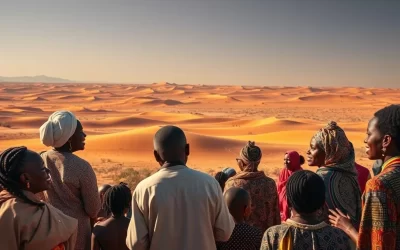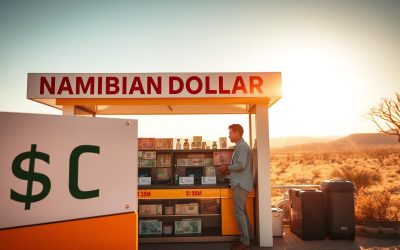Did you know Namibia is home to the world’s oldest desert, the Namib, which has existed for at least 55 million years? This southern African nation offers some of the most spectacular and otherworldly landscapes on earth, from towering red sand dunes to shipwreck-strewn coastlines and wildlife-rich savannahs. Whether you’re seeking adventure, wildlife encounters, or simply the profound silence of vast open spaces, Namibia delivers unforgettable experiences that will leave you in awe of our planet’s natural wonders.
Planning Your Journey to Namibia
Namibia’s vast landscapes and remote attractions require thoughtful planning. The country is surprisingly accessible, with good infrastructure for tourism despite its wild character. Most international visitors arrive via Hosea Kutako International Airport near Windhoek, the capital city.
Ready to Experience Namibia?
Find the best flight deals to start your Namibian adventure.
When to Visit Namibia
Namibia is a year-round destination, but the dry winter season (May to October) is generally considered the best time to visit. During these months, wildlife congregates around water sources in national parks, making game viewing exceptional. The skies are clear, temperatures are moderate, and mosquitoes are minimal.
The summer rainy season (November to April) brings its own charm with lush landscapes, dramatic thunderstorms, and newborn wildlife. However, some remote areas may become difficult to access due to flooding, and temperatures can soar above 40°C (104°F).
The best time for stargazing in Namibia is during the dry winter months of June and July when skies are guaranteed to be clear, especially in the Namib Desert – one of the darkest places on Earth for observing the night sky.
Getting Around Namibia
Namibia is a road-trip paradise with well-maintained highways connecting major destinations. However, many of the country’s most spectacular attractions are accessed via gravel roads that require careful driving. A 4×4 vehicle is highly recommended, especially if you plan to visit remote areas like the Skeleton Coast or parts of the Namib Desert.
Road Trip Tip: Distances between attractions can be vast (200-600km), and you might drive for hours without seeing another vehicle. Always carry extra water, food, and fuel. Most rental vehicles come equipped with two spare tires and two gas tanks for safety.
Explore Namibia at Your Own Pace
Rent a reliable 4×4 vehicle for the ultimate Namibian adventure.
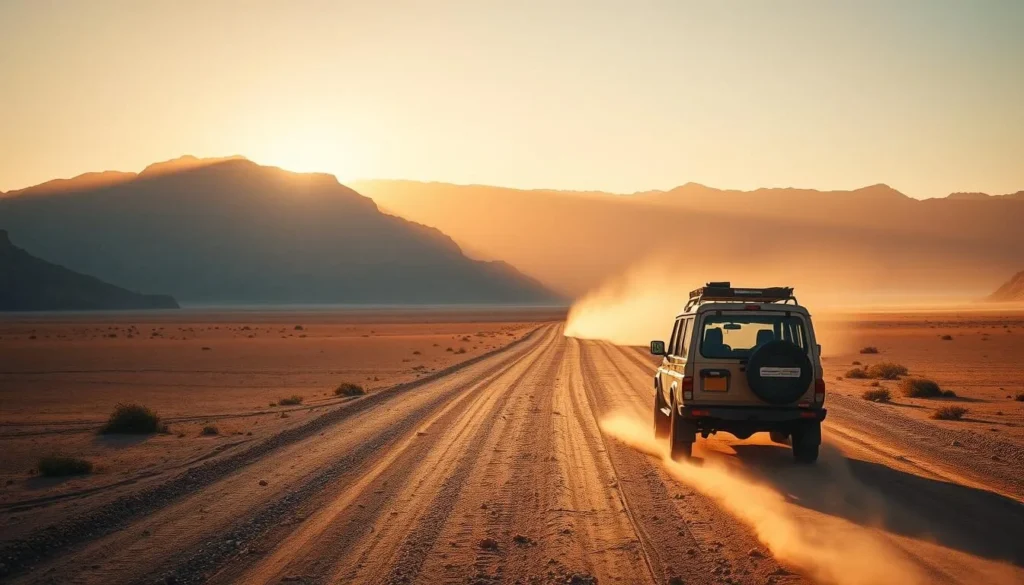
12 Best Things to Do in Namibia
From climbing towering dunes to tracking rare desert-adapted wildlife, Namibia offers experiences you won’t find anywhere else on Earth. Here are our top picks for unforgettable activities in this remarkable country.
1. Climb the Towering Dunes of Sossusvlei
Sossusvlei is home to some of the world’s tallest sand dunes, with their striking red-orange color creating an otherworldly landscape that defines Namibia in the minds of many travelers. The most famous is “Big Daddy,” towering 325 meters (1,066 feet) above the desert floor. Climbing these massive dunes is challenging but rewarding, offering breathtaking views across the ancient Namib Desert.
Nearby Deadvlei presents an equally mesmerizing sight – a white clay pan dotted with 900-year-old petrified acacia trees, their dark silhouettes stark against the white floor and orange dunes. The contrast makes for some of Africa’s most iconic photography opportunities.
Visitor Tip: Arrive at Sossusvlei at sunrise for the most dramatic lighting and cooler temperatures for climbing. Stay at accommodations inside Namib-Naukluft National Park’s outer gate to get an hour’s head start before the main gates open.
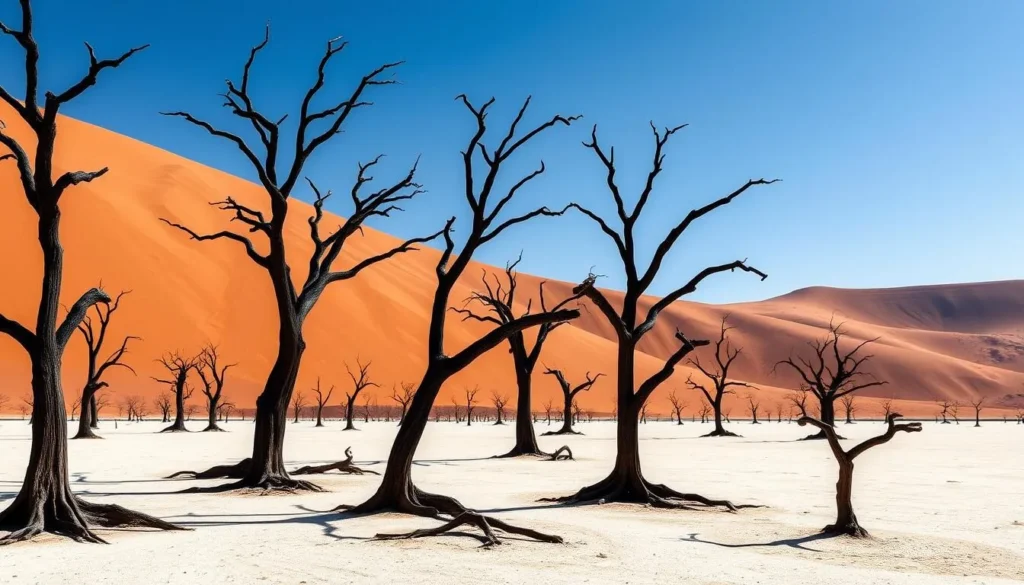
Experience Sossusvlei’s Magic
Book guided tours to Sossusvlei and Deadvlei with expert local guides.
Find Desert Tours
2. Spot Wildlife in Etosha National Park
Etosha National Park is Namibia’s premier wildlife destination and one of Africa’s greatest game reserves. Centered around the vast Etosha Pan – a salt flat so large it can be seen from space – the park is home to four of the “Big Five” (lion, leopard, elephant, and rhino) along with numerous other species including giraffe, zebra, cheetah, and many antelope species.
What makes Etosha special is its network of waterholes, where animals congregate in large numbers during the dry season. You can simply park your vehicle at these oases and watch as a parade of wildlife comes to drink throughout the day.
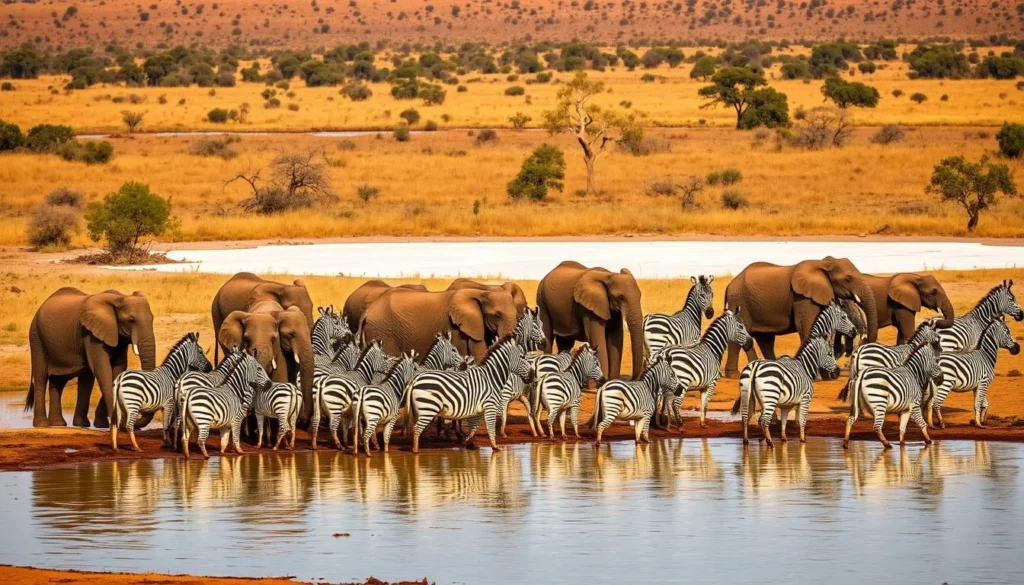
The name “Etosha” means “Great White Place” in the local Ovambo language, referring to the enormous salt pan that dominates the park. During rare heavy rains, the pan fills with water, attracting thousands of flamingos.
Safari in Etosha National Park
Book guided game drives or self-drive safari experiences in Etosha.
Explore Safari Options
3. Explore the Skeleton Coast
The Skeleton Coast earns its ominous name from the numerous shipwrecks that litter this foggy, treacherous Atlantic shoreline. This remote coastal wilderness stretches for over 500km and offers some of Namibia’s most hauntingly beautiful landscapes where the desert literally meets the sea.
Beyond the shipwrecks, the Skeleton Coast is home to unique wildlife adapted to this harsh environment. Enormous seal colonies attract predators like brown hyenas and jackals, while desert-adapted elephants and lions can sometimes be spotted in the dry riverbeds that cut through the region.
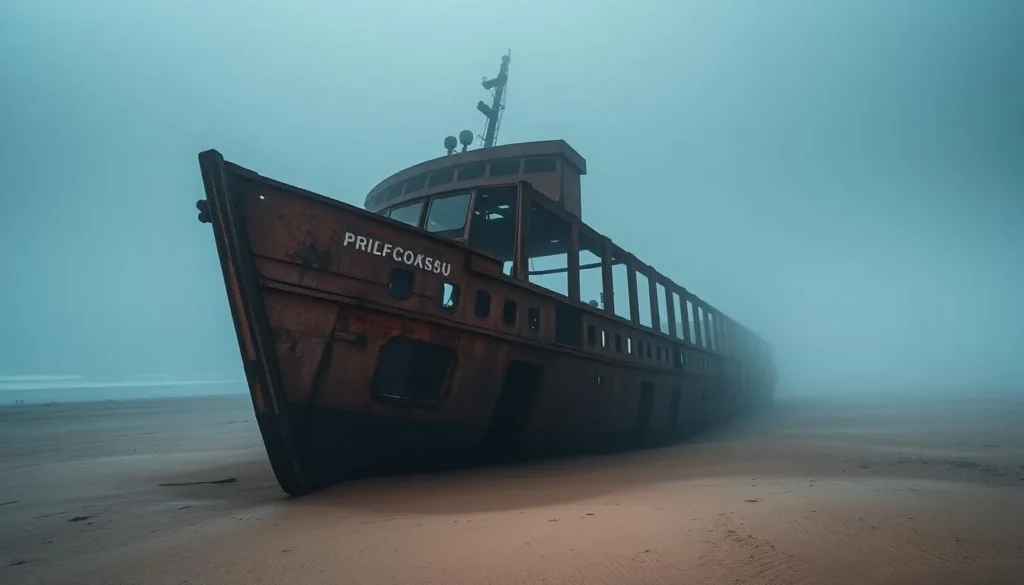
4. Visit the Ancient Rock Art at Twyfelfontein
Twyfelfontein contains one of Africa’s largest and most important concentrations of rock art. This UNESCO World Heritage site features over 2,500 rock engravings dating back 2,000-6,000 years, created by ancient San hunter-gatherers.
The petroglyphs depict animals, hunting scenes, and abstract symbols, providing fascinating insights into the spiritual beliefs and daily lives of the region’s earliest inhabitants. The dramatic setting among red sandstone formations adds to the site’s mystical atmosphere.
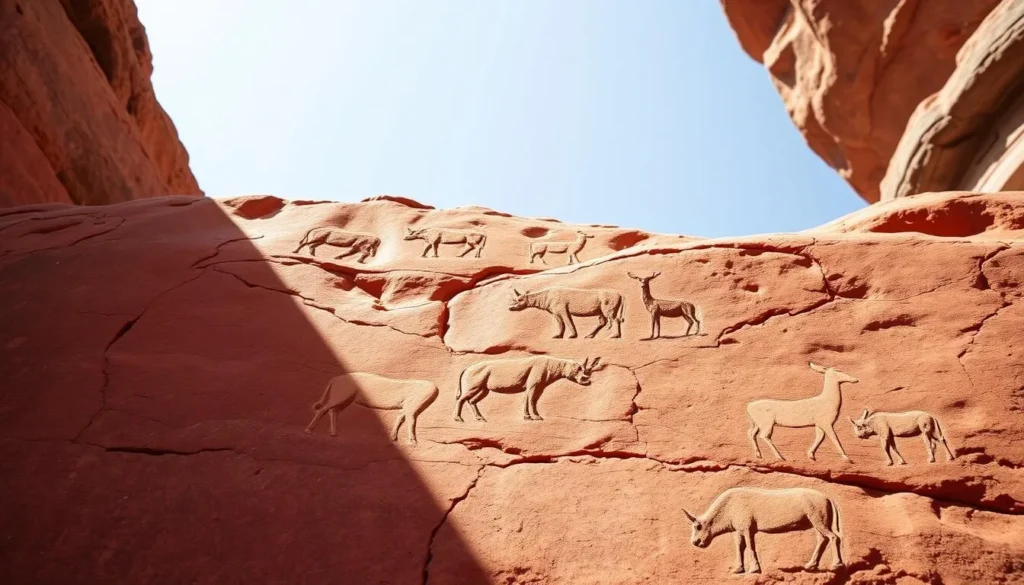
5. Experience the Coastal Charm of Swakopmund
Swakopmund is Namibia’s adventure capital and a perfect place to recharge during your journey. This coastal town blends German colonial architecture with a distinctly African character, creating a unique atmosphere. Palm-lined streets, seaside promenades, and excellent restaurants make it a pleasant place to spend a few days.
Adventure enthusiasts can try sandboarding on the nearby dunes, quad biking, skydiving, or scenic flights over the desert. The town is also the gateway to Walvis Bay, where dolphin cruises and kayaking with seals are popular activities.
Stay in Swakopmund
Find comfortable accommodations in this charming coastal town.
6. Meet the Himba People
The Himba are one of Africa’s most distinctive indigenous groups, known for their ochre-colored skin, intricate hairstyles, and traditional lifestyle. In northern Namibia’s Kunene region, particularly around Opuwo, you can visit Himba villages with a respectful guide to learn about their unique culture.
The Himba maintain many traditional practices, including the application of otjize paste (a mixture of butterfat and ochre) to protect their skin from the harsh sun. Village visits offer insights into their semi-nomadic lifestyle centered around cattle herding and their spiritual beliefs, including the sacred fire that connects them to their ancestors.
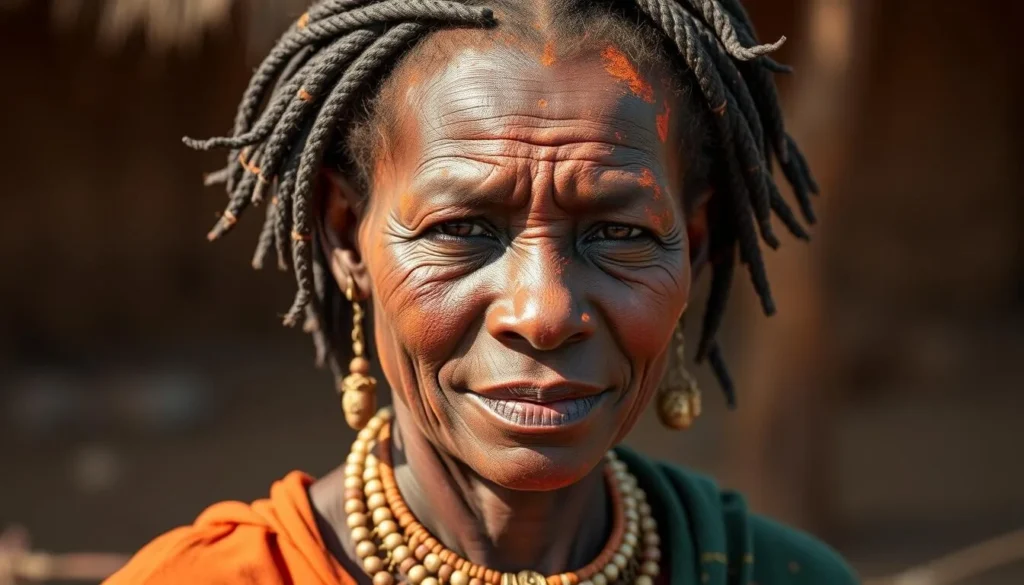
Cultural Respect: When visiting Himba communities, always go with a reputable guide who can facilitate communication and ensure your visit benefits the community. Ask permission before taking photographs, and consider purchasing handicrafts as a way to support local artisans.
7. Hike the Fish River Canyon
The Fish River Canyon is the second-largest canyon in the world after the Grand Canyon. This massive geological wonder stretches for 160km with a width of up to 27km and depths reaching 550 meters. The sheer scale of the canyon, with its dramatic rock formations and the winding Fish River below, creates breathtaking vistas.
For adventurous travelers, the 85km Fish River Canyon Hiking Trail is one of Africa’s premier treks. This challenging 5-day hike takes you along the canyon floor through remarkable scenery. For those not undertaking the full hike, several viewpoints offer spectacular panoramas.
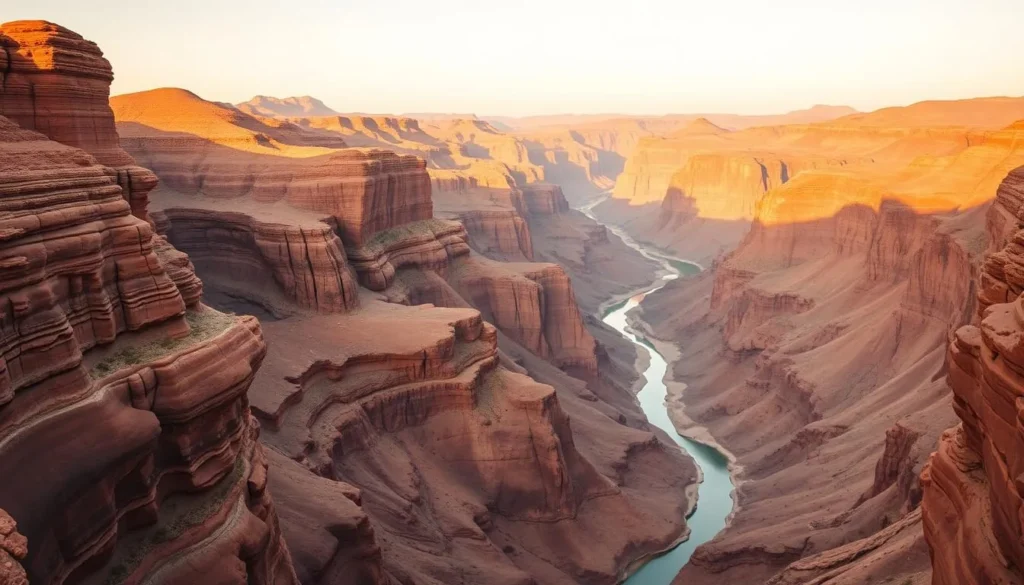
8. Stargaze in the NamibRand Nature Reserve
The NamibRand Nature Reserve is one of only a few Gold Tier International Dark Sky Reserves in the world. With virtually no light pollution, minimal cloud cover, and clear, dry air, it offers some of the planet’s most spectacular stargazing opportunities.
Here you can witness the Milky Way in all its glory, spot the Southern Cross constellation, and see stars so numerous they seem to blanket the entire sky. Many lodges in the area offer stargazing experiences with powerful telescopes and knowledgeable guides.
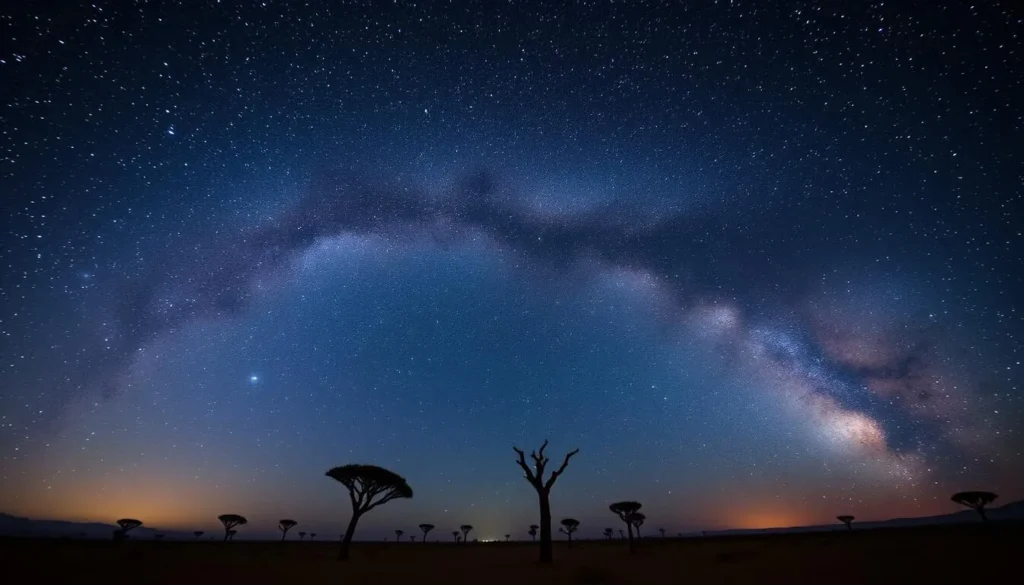
9. Explore the Ghost Town of Kolmanskop
Once a thriving diamond mining town, Kolmanskop is now a fascinating ghost town being slowly reclaimed by the desert. Founded in the early 1900s during the diamond rush, it was abandoned by the 1950s when richer diamond deposits were found elsewhere.
Today, visitors can wander through sand-filled buildings that once housed a hospital, ballroom, school, and elegant homes. The surreal sight of desert dunes flowing through doorways and windows makes for unforgettable photography. The town is located near Lüderitz and requires a permit to visit.
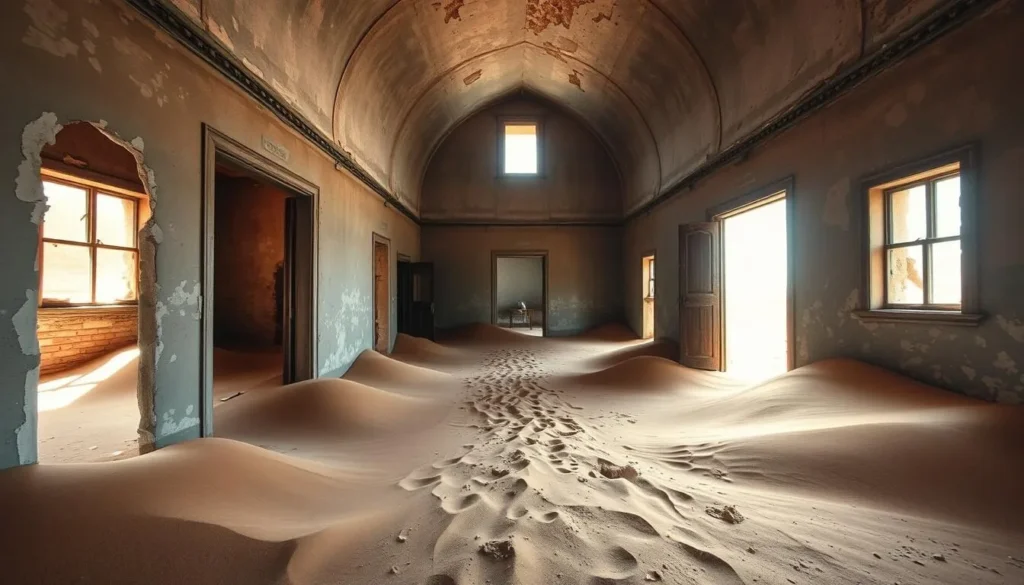
10. Track Desert-Adapted Wildlife in Damaraland
Damaraland’s rugged, arid landscapes are home to remarkable wildlife that has adapted to survive in these harsh conditions. The region is famous for its desert-adapted elephants, black rhinos, and lions – rare subspecies that have evolved special behaviors to thrive where others could not.
Tracking these animals with experienced guides is an unforgettable experience that offers insights into their unique adaptations and conservation challenges. The dramatic scenery of Damaraland, with its table mountains, ancient volcanic features, and striking rock formations like those at Spitzkoppe, adds to the appeal.
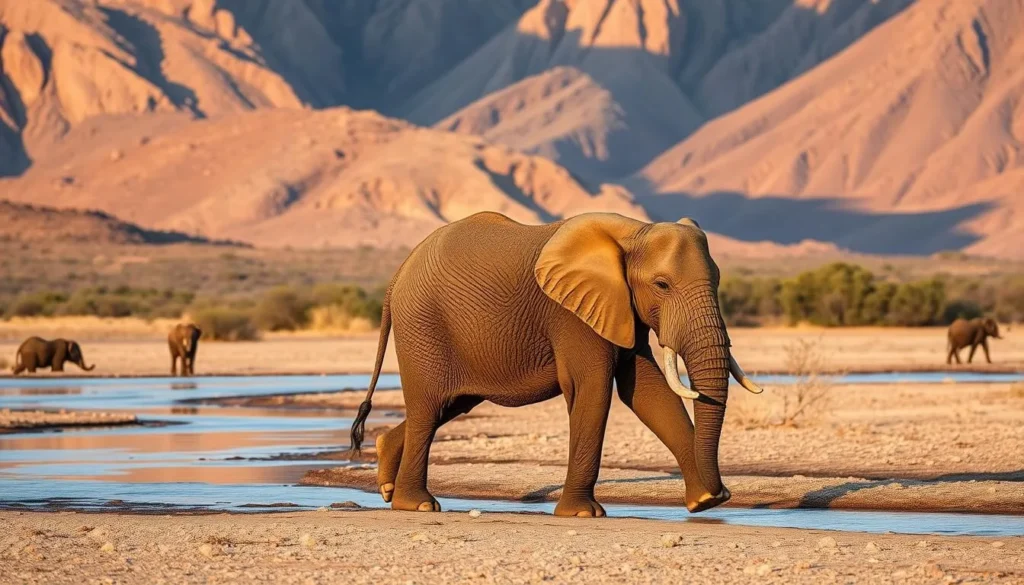
11. Sample Namibian Cuisine
Namibian cuisine reflects the country’s diverse cultural influences and abundant game. Meat features prominently, with game species like oryx, kudu, and springbok offering lean, flavorful alternatives to conventional meats. Biltong (dried, cured meat) is a popular snack throughout the country.
In coastal towns like Swakopmund, fresh seafood is a highlight, while German colonial influence is evident in dishes like sauerkraut and excellent local beer. Don’t miss trying kapana (grilled meat sold at markets) for an authentic local experience.
12. Drive the Stunning Skeleton Coast Road
The coastal road between Swakopmund and the Skeleton Coast National Park offers some of Namibia’s most dramatic scenery. As you drive north, you’ll witness the stark meeting of desert and ocean, with fog rolling in from the Atlantic creating an eerie atmosphere.
Stop at Cape Cross to see one of the world’s largest Cape fur seal colonies, where thousands of seals bask on the beaches. The journey also takes you past shipwrecks, whale bones, and endless stretches of pristine, desolate coastline that epitomize the wild beauty of Namibia.
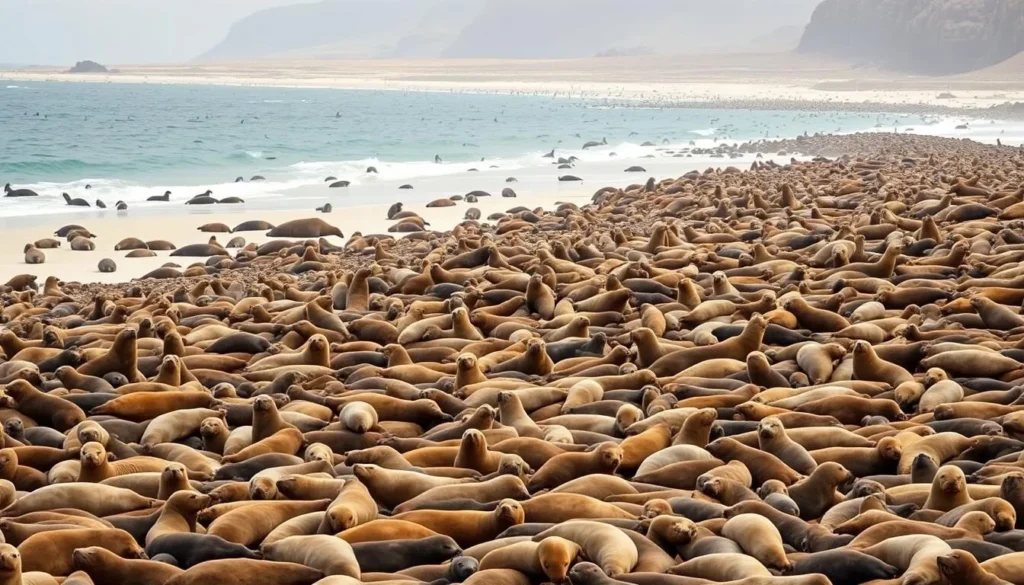
Where to Stay in Namibia
Namibia offers accommodation options ranging from luxury lodges to comfortable campsites. In remote areas, lodges are often the only option and provide not only a place to sleep but also guided activities, meals, and local expertise.
Luxury Lodges
For the ultimate Namibian experience, luxury lodges offer exceptional comfort in remote wilderness settings. Many feature private plunge pools, gourmet dining, and expert-guided activities.
Mid-Range Options
Guest farms, country houses, and smaller lodges provide comfortable accommodation with local character at more moderate prices, often with home-cooked meals.
Budget & Camping
Namibia has excellent campsite infrastructure, with many sites offering basic facilities in spectacular locations. Perfect for self-drivers with camping equipment.
Find Your Perfect Namibian Retreat
Browse accommodations across Namibia, from desert lodges to coastal hotels.
Practical Tips for Visiting Namibia
Essential Travel Information
- Currency: Namibian Dollar (NAD), which is pegged to the South African Rand (ZAR). Both currencies are accepted throughout Namibia.
- Language: English is the official language, though many Namibians also speak Afrikaans, German, and various indigenous languages.
- Electricity: 220V AC, 50Hz. Namibia uses the South African-style three-pin socket (Type M).
- Driving: Namibians drive on the left side of the road. An international driving permit is recommended.
- Water: Tap water is generally safe to drink in urban areas, but bottled water is recommended in remote regions.
- Health: Malaria is present in northern regions, particularly during the rainy season. Consult your doctor about prophylaxis before traveling.
Safety in Namibia
Namibia is generally considered one of Africa’s safest countries for travelers. Violent crime is rare, especially in tourist areas. However, standard travel precautions apply – keep valuables secure, be aware of your surroundings in urban areas, and avoid walking alone at night in cities.
The greatest safety risks in Namibia are related to road travel and the natural environment. Drive carefully on gravel roads, never drive at night outside urban areas, and always carry plenty of water when traveling in remote regions.
Cultural Etiquette
Namibians are generally friendly and welcoming to visitors. When visiting rural communities or indigenous groups, it’s important to show respect for local customs. Always ask permission before taking photographs of people, dress modestly in villages, and follow your guide’s advice regarding appropriate behavior.
Small gifts of food or useful items are appreciated when visiting remote communities, but avoid giving money or sweets directly to children as this can encourage begging.
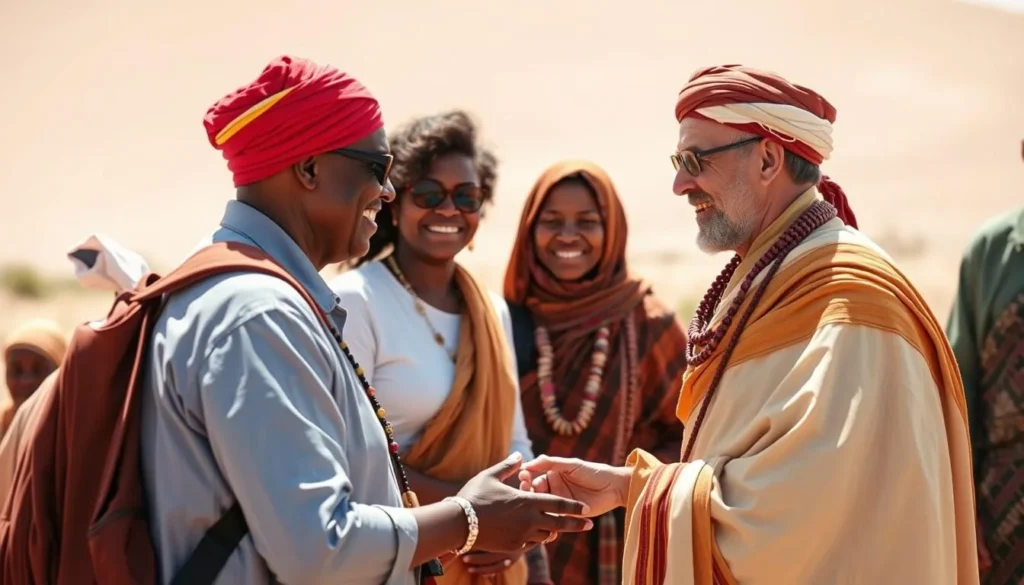
Activities & Tours in Namibia
While self-drive exploration is popular in Namibia, guided tours and activities can enhance your experience by providing expert knowledge, access to remote areas, and specialized equipment for adventures.
Scenic Flights
Experience Namibia’s vast landscapes from above with scenic flights over the Namib Desert, Skeleton Coast, or Fish River Canyon. These flights offer perspectives impossible to appreciate from ground level.
Cultural Tours
Engage with Namibia’s diverse cultures through guided visits to Himba, San, or Damara communities. Responsible tours ensure authentic interactions that benefit local people.
Adventure Activities
From sandboarding the dunes near Swakopmund to quad biking, hot air ballooning over Sossusvlei, or hiking Fish River Canyon, Namibia offers adventures for all levels of thrill-seekers.
Discover Unforgettable Namibian Experiences
Browse and book guided tours, activities, and adventures across Namibia.
Explore Activities
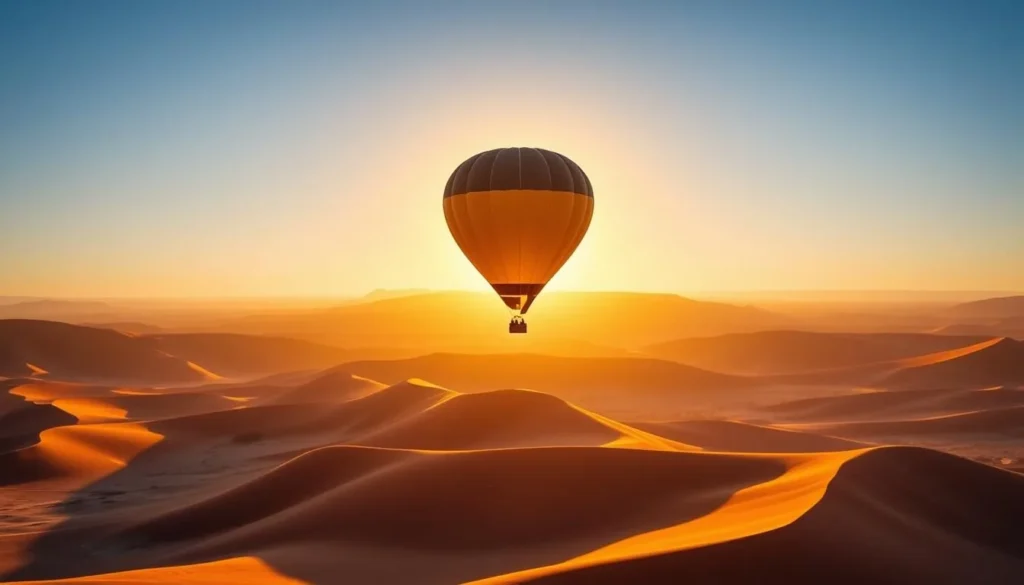
Experience the Magic of Namibia
Namibia offers a rare combination of accessible wilderness, stunning landscapes, and rich cultural experiences that make it one of Africa’s most rewarding destinations. From the towering red dunes of Sossusvlei to the wildlife-rich plains of Etosha, the country presents a diversity of experiences that will leave you with memories to last a lifetime.
What makes Namibia truly special is not just its natural wonders but the sense of space and silence that pervades much of the country. In our increasingly crowded world, the opportunity to stand alone amid vast, ancient landscapes is becoming increasingly precious – and Namibia offers this experience in abundance.
Whether you’re planning a self-drive adventure, a luxury lodge-hopping journey, or a combination of both, Namibia welcomes you with open arms and endless horizons. The only question that remains is: when will you experience the best things to do in Namibia for yourself?
Start Planning Your Namibian Adventure Today
Find flights, accommodations, and activities for an unforgettable journey.
The above is subject to change.
Check back often to TRAVEL.COM for the latest travel tips and deals.
